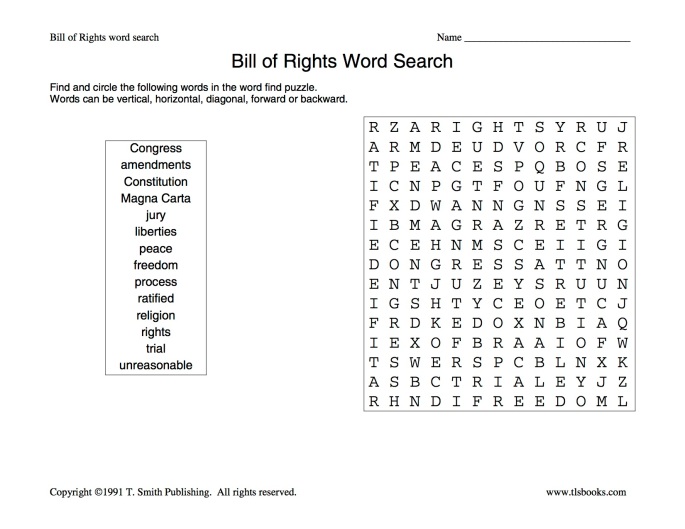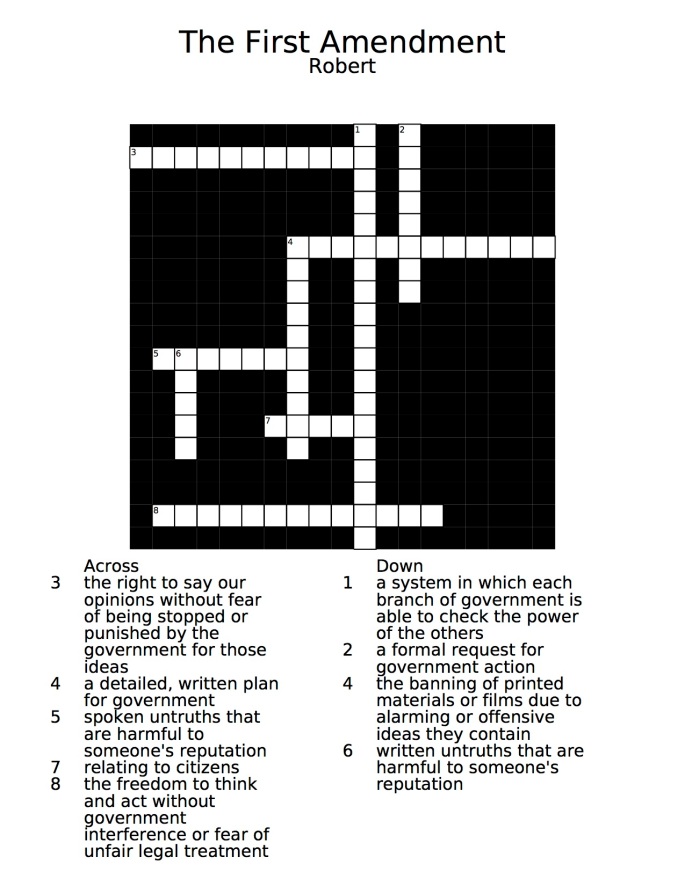Just as important as getting the students in your class interested in the materials, is keeping them engaged during instruction. By utilizing different teaching methods during the lesson plan, students will be engaged throughout and will learn the materials.
Activity 1
By using current (and not so current, but important) events and the First Amendment, have students explain if those events would have occurred had the First Amendment not existed. By doing this in a classroom setting, the students will be able to learn more by receiving feedback from their peers and their instructor.
Discuss as a class:
If you only had freedom of ______, would the events/ achievements below have been/be possible?
- Martin Luther King Jr.’s “I Have a Dream” speech on the National Mall
- The Washington Post uncovering the Watergate scandal
- Women gaining the right to vote
- An all-night prayer vigil in memory of a fallen soldier
- The creation of a Web site that details the sources of politicians’ campaign contributions
Activity 2
Each of the five freedoms given in the First Amendment is important, and they cannot exist without one another. Ask students to explain why this is, this will give students the opportunity to conceptualize and use the information that has been relayed to them during the lesson while also providing opportunities for teacher feedback.
Ask students if they think any one of these freedoms could exist alone, without the support of the other four. For example, would free speech be a powerful right if we did not also have a free press? How would freedom to petition be different if we didn’t also have freedom of assembly? Ask the students to think of more examples of how the freedoms work together
All five freedoms are linked and often intertwine with each other. But what if we had to get rid of one of our five First Amendment freedoms? Which one would they choose? Tell students you’re going to do four rounds of voting to determine which freedom the group thinks is the most important. Ask the students to decide which of the freedoms they would eliminate if they had to pick one. Then have your students show which freedoms they chose using a show of hands. After the first vote, cross out the freedom that received the most votes for elimination. Then ask some of the students who voted for that freedom to explain why they picked it. – Repeat the voting process three more times, asking the students to vote for the right they would eliminate of the ones remaining on the board. After each vote, ask some of the students who voted for the eliminated freedom why they made that choice. – After four rounds of voting, only one right will remain. Ask the students if they agree that this right is most important and why or why not. Ask them how this right would be different if it didn’t have the four other First Amendment rights to support it. Would it still be a useful right? How would people exercise it? Would people exercising this right have to do anything differently if they didn’t have the other four? Has the remaining right lost its meaning because of the elimination of the other four rights?
Activity 3
This activity gives students the opportunity to review the five freedoms given in the First Amendment during class. This activity, which is done either as a class or in small groups, gives students the opportunity to reiterate what they learned and apply it to their lives.
Tell your students you’re going to talk about the First Amendment – the law that’s written six stories tall on the front of the Newseum.
Ask the students if they can remember the five freedoms in the First Amendment. After guesses/discussion, write the five freedoms on the board and make sure your students understand what each one means: –
- Religion – You can believe what you want, belong to any religion or no religion. –
- Speech – You can voice your opinions using words, symbols or actions. – Press – The government cannot censor information in newspapers, online news sources, TV news broadcasts, etc. –
- Assembly – You can gather in a group. –
- Petition – You can criticize the government, and you can complain about policies that affect you negatively and ask for change. –
Ask students for examples of using each of these rights. Tell them to think about their own lives and what they may have seen or read in the news
Activity 4
During the lesson it is important to ask students if what they are learning pertains to them. By asking the below questions after each of these freedoms is discussed and giving the class the opportunity to come up with an answer makes this subject personal, and therefore interesting to the student.
Does this violate the First Amendment’s freedom of religion? Why or why not?
- Your parents insist you attend church every Sunday.
- Your private school requires you to say a certain prayer each morning, even though you have a different faith.
- Your public school begins a sporting event with a student-led prayer over the school’s PA system.
- Your state passes a law that everyone must pay taxes to support a specifi c church. First Amendment Freedoms: What’s a Violation?
Does this violate the First Amendment’s freedom of speech? Why or why not?
- You work in a retail store after school and on weekends. Your boss says you have to stop talking so much while you’re working.
- Your public school administrator suspends you for wearing a black armband in protest of a war.
- Your public school principal says you can’t come to school as long as your hair is dyed purple.
- You do not wish to say the Pledge of Allegiance each morning, and your principal expels you. ?
Does this violate the First Amendment’s freedom of the press? Why or why not?
- You work in a restaurant. Your boss treats you unfairly, and you write about what happened on your Facebook page. Your boss fi nds out what you wrote and fi res you.
- Your school newspaper is produced by the journalism class. Your public school principal objects to the content of an article and censors the newspaper.
- Your parents won’t let you have a MySpace page.
- Police arrest a professional reporter for writing an article that criticizes the government.



